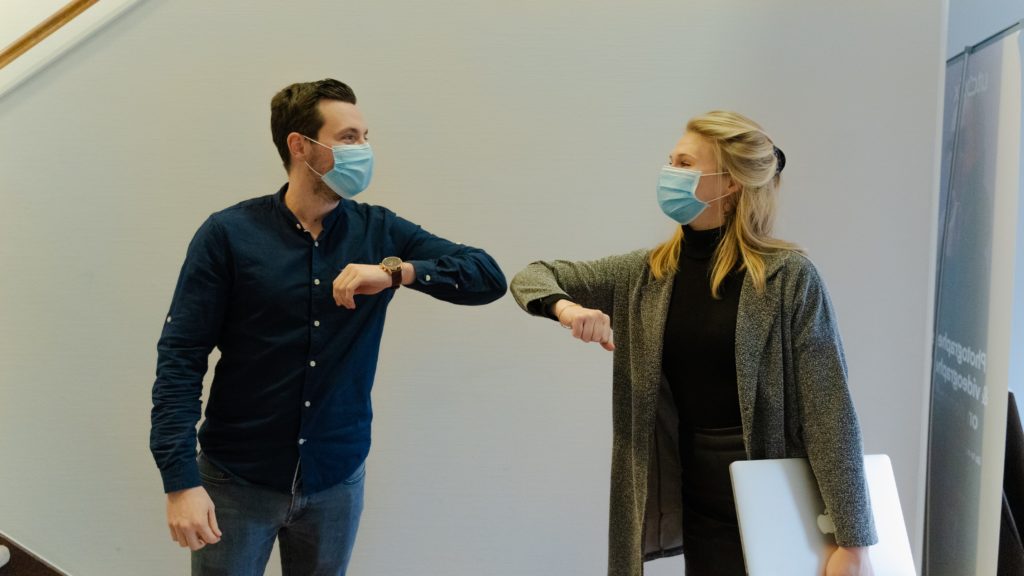Frustrated by the slow pace of vaccine uptake among certain segments of the US population, the Biden administration announced that roughly 100 million federal workers and contractors will soon be required to be vaccinated against COVID-19. Although the executive orders appear to impact the public sector most, it’s a far-reaching decision that may extend to other industries and even nations. What does the announcement mean for communicators and how should you deliver difficult news to your colleagues?
President Biden’s recent vaccine announcement will no doubt have a material impact upon HR policies, but it was also a fascinating moment for communicators. When he stepped up to the mic and gave vent to his obvious frustration and disappointment with unvaccinated people, the President struck a different tone to the positive, conciliatory one he has become famous for.
Was he right to abandon his confident, collaborative approach in favor of a harsher and more authoritarian attitude, and what could this mean for communicators charged with relaying unpopular or controversial messages?
Below, we highlight what the recent announcement means for business and explore some of the creative ways that communicators can use intranet software to effectively deliver difficult news and convey challenging, controversial decisions.
First, what does the US vaccine mandate mean for business?

In its swift response to the announcement, HR Dive observed that the US government was effectively taking a lead so that companies could feel safe should they decide to enforce similar rules on their own private sector employees. With the backing of a clear precedent, workplace vaccine mandates may not just be seen as legally justifiable, but commercially necessary. HR Dive commented, “It’s designed to level the playing field in the competition for talent. Fewer employees will quit over a mandate when competitors are subject to the same requirement.”
With a national and competitive wind behind those companies that support compulsory shots then, it may be that we’re headed for a de facto state of “no jab, no job” as our English colleagues have heard circulating in their media.
14 steps to great internal communications
Other countries are already making COVID inoculations compulsory

Speaking of the UK, what does the situation look like beyond US borders ? Typically, where the US leads, others follow, but in the case of COVID vaccinations, many other countries have been faster out of the blocks.
In Australia, workers in care homes and quarantine hotels face similar rules, while in Canada, recent announcements have extended the same rules to federal public servants and possibly to all air, train, and cruise ship passengers. Interestingly, Air Canada has already instituted a mandatory policy for all employees and new hires.
While these rules are being commonly extended to care home and healthcare settings in many countries, patrons of nightclubs, concerts, and other crowded spaces in places such as Greece and England will also soon need to show proof of vaccination, thus adding even more workers to the list.
What does this all mean for internal comms and HR teams who need to understand, relay, and deal with potentially controversial decisions in their organizations?
How you can use your intranet to deliver difficult news

In many organizations, particularly for remote, hybrid, and frontline employees, the company intranet is not just a central information point for top-down messages, but also a place where they can gauge the feelings of their colleagues and give their own feedback to the company.
Maximizing the functionality and accessibility of your intranet at a time when people are likely to have more questions, or pieces of negative feedback can help ensure they receive correct, up-to-date information, but also that their responses are recorded so that you can adjust your messaging and comms plan if necessary.
So, what tools could you deploy to effectively and creatively share important (if not always popular decisions):
- Update Homepages and news feeds: Share important news and information with employees in a top-down communication cascade, ensuring a single version of truth in a centralized location. Reassurance, guidance, and ‘next steps’ from senior management help employees feel calm and informed. Having a centralized, constantly updated source of information may embed important information faster and provide better context than a single email or video message from your CEO.
Best of all, updated homepages allow you to obey the number one rule of keeping people onside, avoiding making people wait for messages they’re already hearing through company whispers.
- Individualize through Personas: Although we may structure our organizations by locations or departments, this often doesn’t reflect the reality of how team members operate and need to be communicated with.
Similarly, not all challenging decisions will apply in exactly the same way to all user groups within your organization, so, rather than manually contacting each person, or blanket messaging people it doesn’t apply to, modern intranet software allows you to group your employees according to multiple criteria. This will allow you to achieve one of the goals of delivering successful communications, which is tailoring your message to the audience. Perhaps one user group will need to hear a softer message than another: it’s possible with Interact’s unique Personas feature.
14 steps to great internal communications
- Reach every employee: When it comes to choosing comms distribution channels, remember that not every employee has access to the same computer equipment or mobile devices. Distribute information across Digital Signage channels throughout your global footprint of factories, retail outlets, and more, by posting key content on multiple screens that can be seen by an even wider cohort of colleagues. This has the power to encourage employees to delve into the information surrounding the decision and drive higher engagement.
It will also be important to alert individuals through a feature like Broadcasts, which enables messages to be composed within your intranet and broadcast to staff via SMS, email, a blocking notification within the intranet, and/or a display banner.
Broadcasts can be tailored to persona, department, location, or team, enabling you to target messages appropriately. Where you have a message that could spark speculation, rumor, or even panic, broadcasting regular updates as the situation changes or develops can keep employees informed and prevent things escalating unnecessarily.
This multichannel messaging approach is crucial when it comes to ensuring clarity—another important rule in controversial communications and delivering potentially bad or difficult news.
- Create an ‘employee toolkit’: Thanks to the instant connectivity offered by social media and rolling news, information shared within an organization can become public fast. Why not support employees and help align the message by giving them the right tools?
A ‘toolkit’ with items such as prepared or official statements, quotes, FAQs, shareable information, a Q&A forum, or any images, videos, or collateral the organization is happy to share, equips and empowers staff. This can help prevent speculative or incorrect information entering the public domain, reducing the associated risk of unpopular or controversial decisions being mispresented.
After the darkness comes the dawn

As a company and an internal communications professional, however you choose to deliver difficult news to employees, there will come a moment when things get easier.
You may need to continue managing change and uncertainty for a while, however, and moving on as an organization may take time. For that reason, it’s important that comms don’t stop just because something is no longer in the headlines. Your colleagues will still have opinions and emotions, so it’s vital to continue to gauge staff sentiment and reactions with regular check-ins, whether that’s through pulse surveys, employee forums, an employee engagement survey, or manager check-in meetings. These tools will allow you to listen to employees and address any remaining concerns.
It may take time, but providing the right support and showing employees you’ve listened and understood will make for a smoother path. Just keep the conversation going and focus on your next great comms plan.
Finally, a word on creativity in what you produce. One thing we learned from our recent Creative Comms Masterclass webinar was that communicators are currently interested in moving away from the turbulence of recent times and getting back to using a combination of tools and creativity to produce exciting, dynamic content that resonates in their organizations.
So, whether you choose to go disappointed like President Biden, or happy… like President Biden, next time you have to deliver difficult news, just make sure your approach has got the power to stick.


